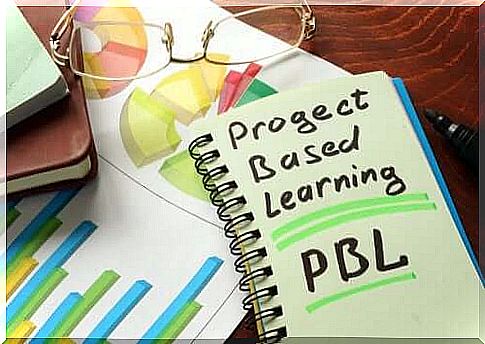PBL In The Classroom To Make The Pupil The Protagonist

The dynamics of passive pupils attending master’s lessons is not contemplated in the philosophy of PBL in the classroom, as the essence of this didactic approach is to ensure that the pupil is the main agent of his or her learning.
With the participation of all professionals of the educational community, the aim of the PBL in the classroom is to equip pupils with sufficient and necessary skills and autonomy through the elaboration of projects that can solve the problems of everyday life.
What does the PBL the class consist of?
Project Based Learning (PBL) is one of the pedagogical approaches used within the so-called active learning. Unlike other direct teaching methodologies, in PBL knowledge must be developed by the pupil himself, which greatly facilitates motivation and, consequently, learning.
Another aspect that distinguishes PBL from other methodologies is that the roles of the teacher and the pupil are very different from direct teaching.

In PBL the pupil must actively participate in his learning, while the role of the teacher consists in being a mere helper or guide for pupils in the elaboration of their projects.
However, the secret lies in considering the educational center as an ecosystem. This indicates the need to produce active involvement on the part of all. Similarly, it will be necessary to analyze all the factors that can affect development, since they are all related to each other.
How to develop a PBL project in the classroom?
The development of a PBL project consists of three phases:
- First phase : the objectives, contents and activities that will start the project are established. These must be delimited by the interest of the pupils, which is why the teacher must take them into account when choosing the topic.
- Second phase : we start developing the project and define the intent of the product. The product will be a flyer, a campaign or a scientific research, but not only. Through group work, pupils will conduct research to obtain certain information and reflect on it.
- Third and last phase : it is dedicated to the self-assessment and enhancement of what has been completed. Pupils will evaluate and grade their learning, the work they have done and the final product.
What are the benefits of this didactic approach?
The PBL requires pupils to search for information, develop their own content, engage in debates and reflect on the information gathered and, finally, on their own work. Thanks to this, their motivation to learn increases enormously.
University of Ohio professors Willard and Duffrin say Project Based Learning improves the satisfaction of learning and educates students to deal with real-world situations they will encounter in their professional future.

Eduardo Rodríguez de Sandoval, a lecturer at the National University of Colombia, says pupils who work on projects acquire great teaching and skills. They improve their ability to work as a team, they try harder, they are more motivated and interested, they learn to present content and deepen the concepts.
Ultimately, the PBL in the classroom seeks a new conceptualization of the teaching-learning process, which is up to and in step with our current societies and, finally, with the new generations of pupils.









